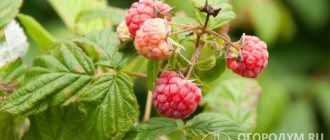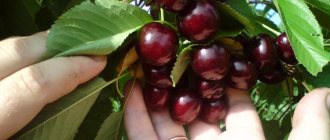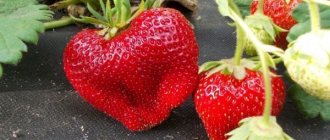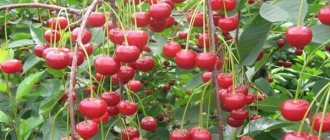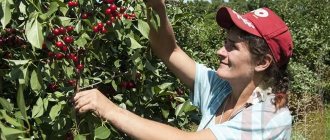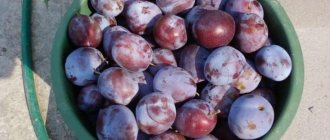Description of the variety and photo
This variety was bred by American breeders in the 1980s. It has a great aroma and high yield. Even in the rainy season with few sunny days, Geneva strawberries please with stable fruiting. The plant is resistant to most diseases.
The leaves have the following characteristics:
- medium in size;
- light green;
- peduncles are long, inclined towards the soil.
The pulp is juicy and red. The strawberries taste sweet, without sourness, but not at all cloying. It makes delicious jam.
Strawberry Geneva
The Geneva variety was bred in America and was brought to Russia in the late 80s. This variety is distinguished by abundant fruiting and, regardless of this, they do not lose their quality for several years.
Description of the variety
The bushes are spreading, squat, medium-sized. No more than 7 mustaches are formed on each bush. The peduncle does not rise and, lying down, carries the berries outside the bush in different directions. The variety is distinguished by its growth intensity.
At the first harvest, the weight of the fruit reaches 50 grams. The shape of the fruit is truncated-conical, ribbed. The surface of the berries is bright red or cherry, glossy. The pulp has a pleasant sweet taste, slightly sour, juicy, dense, red, with a unique aroma, which, when fruiting, spreads beyond the area with the berries.
Transportability of berries is at a high level. The appearance does not suffer when transporting fruits.
The variety produces a bountiful harvest from early summer until autumn frosts. The first harvest is harvested in early June. The second is from July to the end of October.
If the autumn is warm, the harvest may extend into winter. After the first harvest is harvested, the bushes are covered with new flowers.
The rest period in Geneva takes 2 – 2.5 weeks. Unrooted young rosettes with seven leaves form the first flower stalks.
Rainy and cloudy weather does not affect the yield of the variety. Geneva compensates for the volume of berries in the summer-autumn period.
The bushes should grow without touching each other. Thickening of plantings leads to excess dampness and the appearance of gray rot. Geneva is not afraid of other diseases of viral or fungal origin. The variety is not afraid of spider mites.
Features of propagation and planting
The variety is propagated by seeds and tendrils
Seeds of this variety germinate rather poorly without special treatment. To get good shoots, they need to be placed in cotton cloth and put in the refrigerator for a month. For the soil mixture, take 5 parts of rotted humus and 3 parts of river sand. The mixture is stirred and calcined in the oven for 3 - 4 hours at a temperature of 100 degrees.
The seeds are sown. When sowing in open ground, the time for this stretches from the end of January to the beginning of March. When sowing in a box or pot, the best time is January. Street plantings are covered with a thick layer of snow or two layers of film. The box or pots are covered with film. The box with seeds is placed in a cold place for 5 days, then placed in a room with an optimal temperature of 22 degrees. The soil is irrigated with a spray bottle.
Characteristics of the berry
The bushes of this plant are powerful and squat. Close planting is dangerous: it can lead to thickening of the rows and the spread of gray rot, a disease dangerous for these berries. One bush gives 5-7 mustaches.
Berries of this variety:
- large;
- weigh 50-60 g;
- have a bright red tint;
- have a shiny surface.
The berries are located low, but they should not touch the ground. You should take care of this when planting. Gardeners note two waves of fruiting. In the first wave, the berries are large, reaching a weight of 50 g. The second wave produces small berries, they are half the size of the previous ones. Despite their size, Geneva strawberries remain tasty and aromatic. The shape of the fruit resembles a truncated cone.
Interesting! The first harvest is at the very beginning of June. After this, the bushes begin to rest, which lasts 2.5 weeks. During this period, strawberries throw out mustaches. The second flowering period begins. The second harvest ripens in July.
Strawberries "Geneva" - an excellent remontant variety for the garden
Not a single gardener has a question about whether to plant strawberries on his plot. The answer is obvious: of course, plant! You just need to choose the appropriate variety, which has high requirements. In the description, it should have large berries, high yield, ease of care, and repeated fruiting. Therefore, gardeners most often give preference to remontant varieties, such as “Geneva”. You can read a lot of positive reviews about this strawberry. And her photos whet the appetite of all those with a sweet tooth and not only that.
Advantages and disadvantages of remontant varieties
Remontant varieties are varieties of strawberries that are capable of blooming and bearing fruit many times during one growing season. Those who planted them on their plot can harvest several harvests of sweet berries per season. These varieties have a number of advantages:
- high productivity;
- large berries;
- compactness of bushes;
- decorativeness of plants;
- possibility of reproduction, both by mustache and seeds.
But remontant varieties also have their disadvantages:
- low frost resistance;
- demanding care;
- high demands for watering and fertilizing.
Berry variety Geneva
Nevertheless, these shortcomings do not scare away gardeners. After all, the reward for your efforts will be a magnificent harvest.
Most often, large-fruited strawberries, such as the “Geneva” variety, are planted in garden plots. But small-fruited remontant berries also have a big advantage - continuous fruiting throughout the season.
Attention! Remontant strawberries will perform best in the second year after planting. After 2 years, the yield will be smaller, as will the size of the berries.
Description of the variety "Geneva"
The “Geneva” variety is one of the brightest representatives of remontant strawberries with all its advantages. It was bred a little over 20 years ago in the USA, and around the same time it came to Russian gardeners.
Bushes of the "Geneva" variety are of medium height, but quite spreading. They should not be planted too close because this increases the risk of gray mold. The leaves on the bushes are medium, light green. The number of tendrils is small - up to 7 pieces per plant.
"Geneva" can simultaneously produce berries of different sizes. They are mostly large - about 50 g. The fruits have the shape of a truncated cone. The surface of the strawberry is shiny and ribbed, red in color. The pulp is also red, very juicy and aromatic. The taste of the berry is sweet, but not cloying, without sourness.
Advice. The "Geneva" variety is demanding on irrigation. The more thoroughly and regularly you water, the faster the berries will set and ripen. Also, the beds with these strawberries should be carefully weeded and mulched with fresh dill branches.
"Geneva" produces its first harvest in early summer. Already 2 weeks after picking, new berries begin to form. Unlike many other remontant strawberry varieties, “Geneva” does not bear fruit well for 2 years, but produces large fruits in large quantities within 5-6 years after planting.
Strawberry bushes
Growing Geneva strawberries from seeds
The strawberry variety "Geneva" can be propagated both with the help of mustaches and seeds. Moreover, the second method is more complicated, so it is worth considering its main aspects.
- You should start preparing strawberry seeds for planting from January to March.
- First, you should place the seeds in the cold for a month. The top shelf of the refrigerator is perfect for this.
- Another option is to sow the seeds in a container and place them outside under the snow for a month. But this method is only suitable for snowy winters.
- After this, the container with the seedlings should be taken home and covered with film. After 2-3 weeks, the first shoots will appear.
- When each sprout has 3 full-fledged leaves, the seedlings can be plucked.
- Seedlings are moved to open ground in late spring - early summer.
“Geneva” is a variety that performs well in the beds of domestic gardeners. With a little effort, the gardener gets an excellent harvest of sweet and large berries.
How to plant strawberries: video
Reproduction
The variety propagates by seeds and tendrils. Seeds do not germinate well without special treatment. To get good shoots, you need to place them in cotton cloth and leave them in the refrigerator for a month.
The soil mixture requires 5 parts of rotted humus and 3 parts of river sand. The resulting mixture is calcined in the oven for three hours at a temperature of 100 degrees. The seeds are sown. The best time for sowing in open ground is from January to March. Outdoor plantings should be covered with a thick layer of snow or two layers of film.
Gardeners often choose to plant in a box. In this case, the box with seeds is covered with film, placed in a cold place for five days, then placed in a room with a temperature of 22 degrees. The soil is irrigated using a spray bottle. When the first shoots appear, the film is removed.
It is recommended to illuminate the seedlings with additional light for better growth. If 1-2 leaves appear, the seedlings are transplanted into separate containers. The room temperature is reduced to 16 degrees. When the seedlings have 6 main leaves, they need to be transplanted into the ground.
When propagated by whiskers that took root, they became rosettes:
- the most productive and strong bushes are selected;
- when they have taken root and are fully formed, they are separated from the mother bush;
- planted in a new place;
- The area is first dug up and fertilized.
Selva strawberry care
We recommend reading our other articles
- Pig litter with bacteria
- Winter varieties of apple trees
- Grape press
- What are the benefits of goat milk?
With quality care, Selva strawberries will delight you with productivity. But what does it need for full fruiting:
During the first week after planting, the bushes are watered once a day so that they take root faster. They don’t spend a lot of water; systematicity is more important here, not abundance. Then watering is reduced to once every 3-4 days. If it rains regularly, watering can be stopped for a while.
With the Selva variety, excess tendrils are rarely cut off, because they can also begin to produce crops closer to the middle or end of summer, when a large rosette develops from them. Fertilizers are applied under the bushes 2-3 times during the entire growing season. In spring, it is worth adding ammonium nitrate to the soil at the rate of 10 g/10 l of water. And after flowering, make a solution of 15 g of potassium salt and 20 g of superphosphate mixed with 10 liters of water. If there are bushes on the site that are 2-3 years old, then they are fed first, since the same-year-old ones will produce a good harvest without it.
Thanks to lodging-resistant peduncles, the berries usually do not fall to the ground when ripe. But if there are a lot of them, the peduncle may fall under their load. To prevent strawberries from becoming smeared when ripe, it is advisable to lay mulch under the bushes and between the rows. It changes about once a month, sometimes more often - it depends on weather conditions. For example, if it rains constantly, the mulch will quickly rot and turn sour, so it is changed more often.
Selva strawberries are day-neutral varieties. It produces very large yields only in the first year after planting, then the yield decreases
So it is important to renew the plantings every year.
For the winter, in cold regions, strawberries are first covered with a layer of mulch (directly on top of the leaves), then a shelter is made of agrofibre, burlap, spruce branches or similar material
It is important that the strawberries are protected from the first frosts. In winter, they simply throw snow on it, which will serve as a “fur coat” from the cold
But in warm areas, minimal winter shelter is required; it is enough to simply put straw or hay on the plantation.
Important! Very often, before winter, all the leaves of strawberries are cut off. But in the case of the Selva variety, this cannot be done
It is the leaves that are the first level of protection of the roots from frost.
Landing
Before planting, you need to choose the right site:
- it should be well lit;
- it’s great if the area is on the sunny side so that the plant is warmed up;
- the site should protect the plant from strong winds;
- the surface must be flat.
Once the site has been selected, planting can begin. It is recommended to plant rosettes in peat cups that are deepened into the ground. The main thing is that the central kidney is not damaged.
Before planting, it is better to treat the root system with table salt. To do this, mix a bucket of water, three tablespoons of table salt and one tablespoon of copper sulfate. The roots of the plant should be immersed in the solution for ten minutes, then removed and washed with running water. After this, you can proceed to sowing.
The core of the bush should not go very deep into the ground, otherwise the bush will die. Sowing is done very carefully, trying not to damage the bush’s stem and leaves. This is where the landing ends. All that remains is to properly care for the plant and regularly remove weeds.
Planting seedlings in open ground
We recommend reading our other articles
- Strawberry Festival
- Description of the garlic variety Komsomolets
- Why do orchid leaves turn yellow?
- Pickled corn
Geneva strawberries can be planted in spring (mid-May) or autumn (late August to late September). The place is chosen to be sunny, not darkened. The area must be level, clean, and fertilized. Geneva strawberries grow well on sandy loam or loam with neutral acidity.
The place for planting is sunny, not darkened.
Before planting, the ground must be cleared of weeds and then dug up, adding a bucket of humus and 500 g of wood ash to each square of planting. When planting in rows, the pattern is 25x70 cm; when planting in a checkerboard pattern, it is 20x20 cm. Holes are dug for the seedlings. Strawberries are placed in them, the roots need to be straightened so that they do not bend. After this, you can cover the roots with soil, compacting it with your hand so that voids do not form. Upon completion of planting, you need to water the beds and leave the strawberries for about 1 week to take root.
Important!
Geneva strawberry bushes need to be planted at a considerable distance from each other, as they grow in volume. If you spare space on the site, on the plantation, during extreme heat, gray rot will begin to develop due to poor ventilation.
Care and feeding
A gardener should regularly:
- inspect the site;
- remove weeds;
- water the plant;
- loosen the soil;
- perform mulching.
It is also necessary to ensure that the bushes are not connected by branches. They can grow, but there must be a distance between them, otherwise the strawberries will get gray rot.
The plant must be fed so that it is healthy and produces more crops. You can purchase ready-made fertilizers in special stores, or create your own.
Feeding from chicken manure is suitable. You need to mix 1 part litter and 20 parts water. Chicken droppings can be replaced with mullein by mixing 1 part mullein and 10 parts water. Such feeding will have a beneficial effect on fruiting.
Diseases and pests
Strawberry Geneva is resistant to many diseases. She practically never gets sick. The only disease she develops is gray rot. It occurs due to violations of agricultural technology requirements.
To protect the plant from diseases and pests, it is necessary to spray it with special means:
- "Fitosporin";
- a mixture of 1% Bordeaux mixture and 1% colloidal sulfur: the components are mixed in equal proportions;
- Only bushes are sprayed; the soil is not treated with these products.
Important! Strawberry mites and nematodes can harm Geneva strawberries. To protect the plant from pests, the above solutions are used.
Reviews from gardeners
Maria: “I really love this variety of strawberries. Every year I plant and grow it. I am glad that there is always a lot of harvest. The jam turns out delicious. In order for the berries to bear fruit well, do not let the plant freeze, choose a site on the sunny side.”
Elena: “I chose this variety for the first time this year, a friend recommended it. I was worried that the plant needed a lot of care, but it turned out that everything was not as bad as I thought. I simply followed the advice of experts, tried to water the plant on time, and removed the weeds. In the end, the harvest pleasantly surprised me.”
Alina: “I always wanted to grow berries. When I got my own garden, I immediately planted Geneva strawberries. She was recommended by her sister. Planting and growing did not seem too difficult to me, the rules are not difficult to follow. As a result, I was able to harvest a delicious, sweet harvest, the aroma is incredible!”
Geneva strawberries attract gardeners with their resistance to disease, appetizing appearance and pleasant aroma. Having studied the features of planting and growing this plant, you can safely begin to achieve your goal.


